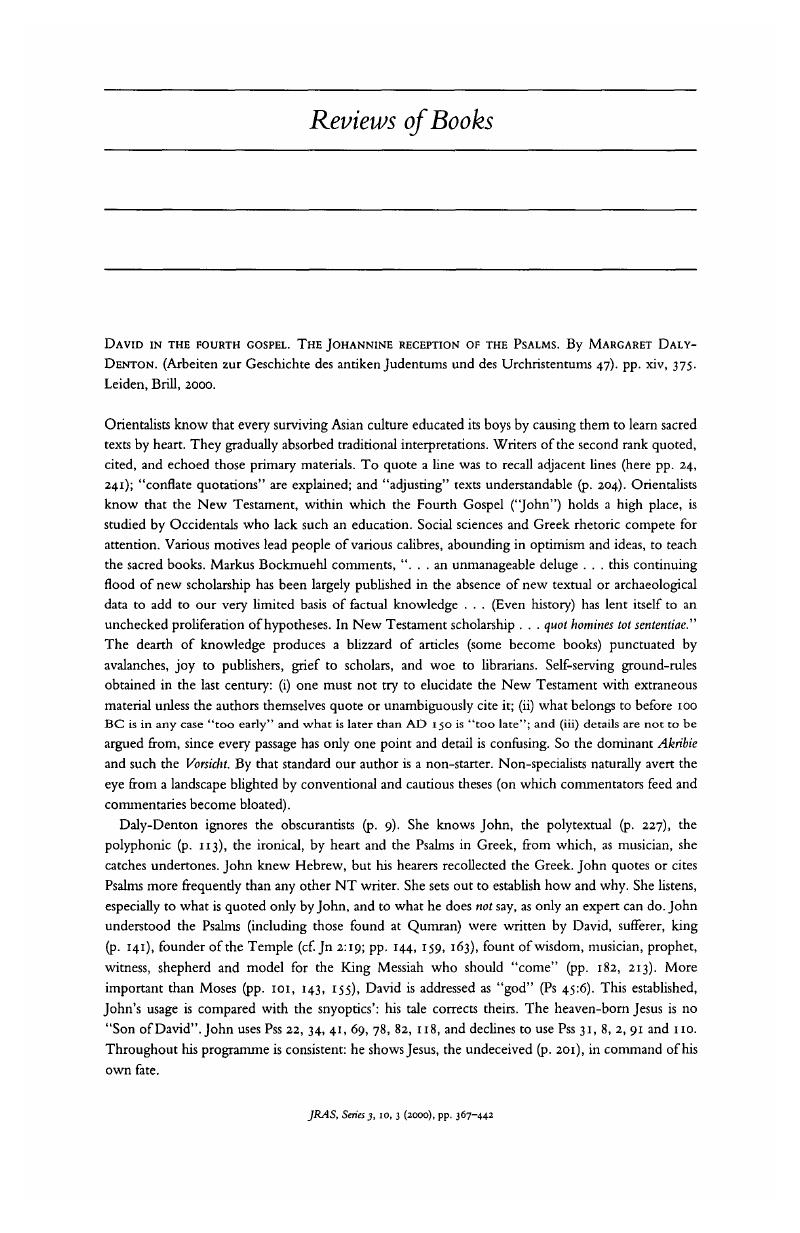No CrossRef data available.
Article contents
David in the fourth gospel. The Johannine reception of the Psalms. By Margaret Daly-Denton. (Arbeiten zur Geschichte des antiken Judentums und des Urchristentums 47). pp. xiv, 375. Leiden, Brill, 2000.
Published online by Cambridge University Press: 24 September 2009
Abstract

- Type
- Book Review
- Information
- Copyright
- Copyright © The Royal Asiatic Society 2000
References
1 One notes Moloney, F. J., “The Fourth Gospel and the Jesus of history”, New Testament Studies XLVI (2000), pp.42–58CrossRefGoogle Scholar.
2 Hollander, J., The Figure of Echo. A Model of Allusion in Milton and After (Berkeley, 1981), Daly-Denton likes the phrases “caves of ambience”, “chambers of meaning”Google Scholar.
3 A continual problem: Söding, T., “‘Was kann aus Nazareth schon Gutes kommen?’ (Joh 1:46). Die Bedeutung des Judenseins Jesu im Johannesevangelium”, New Testament Studies XLVI (2000), pp.21–41CrossRefGoogle Scholar.
4 Koet, B. K., “Purity and impurity of the body in Luke-Acts”, in Purity and Holiness. The Heritage of Leviticus, ed. Poorthuis, M. J. H. M. andSchwartz, J. (Leiden, 2000), pp.93–106Google Scholar.


